Cleaning an oven can be a challenging and time-consuming task, particularly when tackling stubborn grease and baked-on residue. For many, vigorously scrubbing oven surfaces is both unappealing and exhausting.
Fortunately, there are efficient and effortless methods that demonstrate how to clean oven without scrubbing, saving both time and energy. By choosing no-scrub cleaning techniques, you can protect your oven’s surfaces from unnecessary wear caused by abrasive cleaners while still achieving a sparkling clean result.
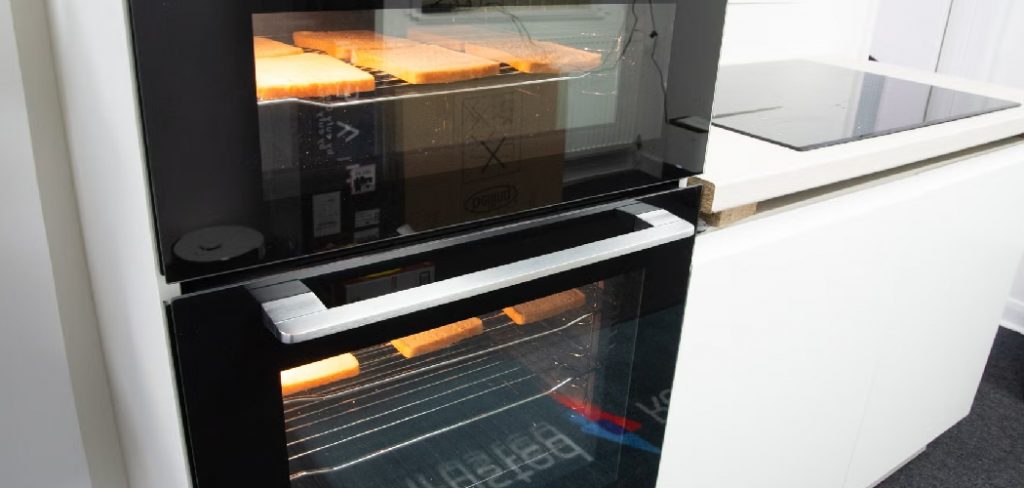
These methods often utilize natural solutions like baking soda or chemical-based cleaners that require little to no manual effort, allowing them to work their magic overnight.
This article aims to explore various hands-free cleaning options, helping you achieve a clean and fresh oven without the traditional hard work. With the right approach, you can enjoy a spotless oven while avoiding the hassle and strain of scrubbing altogether.
Understanding Oven Cleaning Methods
When it comes to cleaning your oven, understanding the different methods available can help you choose the most effective solution based on your needs. Here are some common techniques:
- Steam Cleaning – This method uses heat and water to create steam that loosens grime and grease, making it easier to wipe away. It’s a gentle option, suitable for light stains and regular maintenance.
- Self-Cleaning Mode – Many modern ovens feature a self-cleaning mode. This process involves heating the oven to extremely high temperatures, effectively burning off grease and residue, leaving behind ash that can be easily wiped clean. It’s an efficient method for tackling stubborn, baked-on stains.
- Natural Overnight Cleaning – This eco-friendly technique utilizes common household items like baking soda, vinegar, and lemon juice. These ingredients are applied to the oven surface and left to work overnight, effortlessly breaking down grime.
- Commercial No-Scrub Cleaners – Store-bought spray-on solutions are specifically designed to dissolve tough grease and residue without scrubbing. They typically require a waiting period before wiping away for a clean finish.
Choosing the Right Method
For light stains, steam cleaning or natural overnight options are ideal. The self-cleaning mode or commercial no-scrub cleaners provide more effective results for heavy grease or stubborn baked-on messes. You can ensure an effortless and efficient cleaning experience by selecting the appropriate cleaning technique.
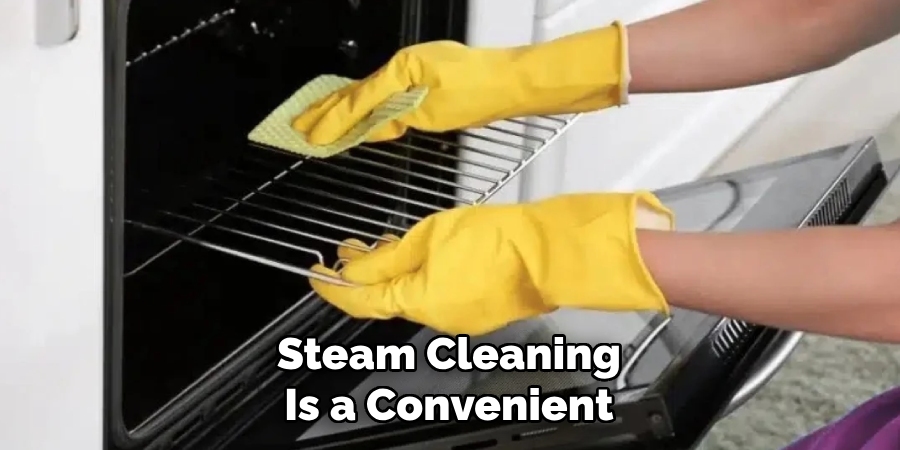
How to Clean Oven Without Scrubbing: Steam Cleaning
Steam cleaning is a convenient and chemical-free option for maintaining a clean oven. Using only water and heat effectively softens food residue and grease, making it easy to wipe away. It’s particularly suitable for regular maintenance and tackling light stains.
How Steam Cleaning Works
Steam cleaning utilizes the power of water vapor to loosen baked-on grime. When water is heated inside the oven, it forms steam that penetrates grease and residue, breaking it down without scrubbing. This gentle process is safe for most oven surfaces and reduces the reliance on harsh chemicals.
Step-by-Step Guide
- Preparation: Begin by removing the oven racks for easier cleaning.
- Add Water: Pour 1–2 cups of water directly into the bottom of the oven or onto the oven floor.
- Heat the Oven: Turn the oven on to a low temperature, around 200°F, and allow it to heat for 20–30 minutes.
- Cool and Wipe: Allow the oven to cool slightly after turning off. Then, use a damp cloth to wipe away the loosened grime and residue.
Alternative Steam Method (Bowl of Water)
If you prefer another approach, this method can achieve similar results. Fill a heat-safe bowl with water and add lemon slices for a natural, fresh scent. Place the bowl in the oven and heat it to 250°F for about 30 minutes. Once the process is complete, simply wipe down the interior surfaces with a damp cloth to remove grime.
Steam cleaning is one of the easiest and most efficient ways to keep your oven spotless with minimal effort.
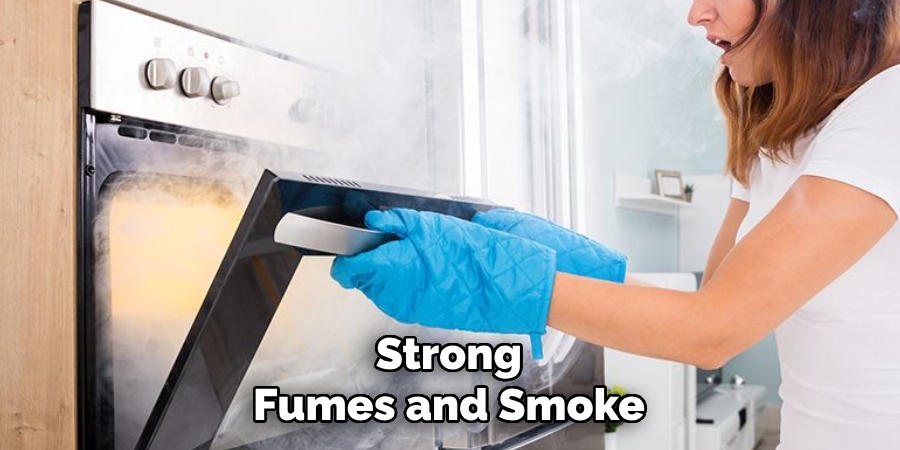
Using the Self-Cleaning Mode
How It Works
The self-cleaning mode is a feature in many modern ovens that heats up to extremely high temperatures, typically between 800–900°F, to burn off food residue. This process reduces grease and grime to a fine ash, which can easily be wiped away after the cycle is complete. It’s a practical and hands-free way to deep clean your oven, saving you time and effort.
Step-by-Step Guide
- Remove Oven Racks: Before starting the self-cleaning cycle, take out the oven racks. The high temperatures can discolor or damage them.
- Close the Oven Door: Ensure the oven door is securely closed. Most ovens will lock automatically during the self-cleaning process for safety.
- Activate Self-Cleaning Mode: Follow your oven’s instructions to turn on the self-cleaning mode. It usually takes between 2 and 4 hours to complete the cycle.
- Cool and Clean: Allow the oven to cool completely once the cycle ends. Then, use a damp cloth or paper towel to wipe away the ash left behind.
Safety Tips
- Ventilate the Area: Strong fumes and smoke can occur during the self-cleaning cycle. Open windows or turn on a ventilation fan to keep the air fresh.
- Keep Pets Away: Ensure pets, especially birds, are removed from the area, as fumes released during the cleaning process can be harmful to them.
- Stay Nearby: Although the process is automated, do not leave the oven unattended while it is running.
By following these steps and precautions, the self-cleaning mode can be a safe and effective way to maintain a sparkling clean oven.
Baking Soda and Vinegar Overnight Method
Why This Works
Baking soda is a natural, mild abrasive that effectively breaks down grease and grime without harsh chemicals. When combined with a mild acid, vinegar creates a foaming reaction that helps lift stubborn residue, making it easier to clean. This method is perfect for those seeking an eco-friendly and non-toxic way to clean their oven deep.
Step-by-Step Guide
- Prepare the Paste: Mix ½ cup of baking soda with a few tablespoons of water until it forms a spreadable paste. Adjust the water amount as needed to achieve the right consistency.
- Apply the Paste: Use a spatula or your hands (wear gloves if preferred) to spread the paste evenly over the interior surfaces of the oven. Avoid applying it to the heating elements, as this could damage them.
- Wait Overnight: Allow the paste to sit and work its magic for 8 to 12 hours or overnight to break down grease and baked-on stains.
- Spray Vinegar: Spritz vinegar over the dried baking soda paste using a spray bottle. The fizzing, foaming reaction indicates it’s working to loosen stubborn grime.
- Wipe Away Residue: Use a damp cloth or sponge to wipe away the softened grime and paste, revealing a cleaner, fresher oven interior.
By relying on the natural power of these common household staples, you can maintain a sparkling clean oven without exposing your home to harsh chemicals.
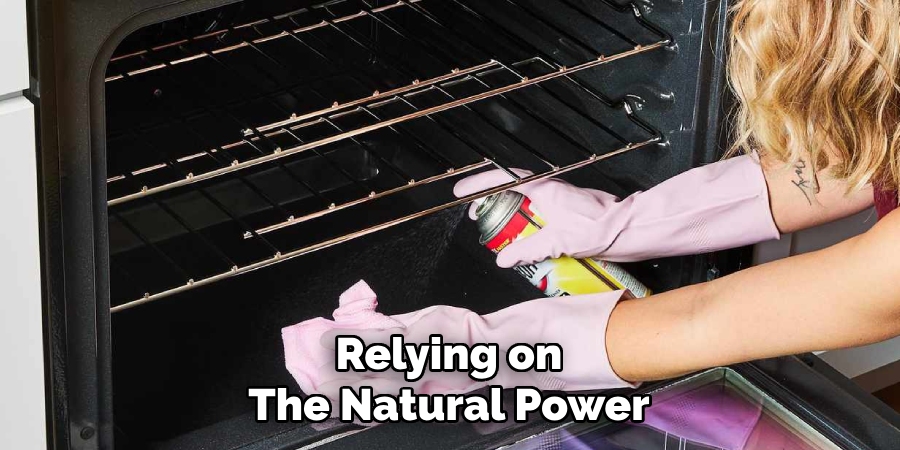
No-Scrub Commercial Oven Cleaners
No-scrub commercial oven cleaners are a convenient solution for tackling tough stains and grime with minimal effort. When selecting a cleaner, opt for fume-free options such as Easy-Off or Carbona, especially if you are sensitive to strong fumes. It’s important to avoid products with harsh chemicals if you prefer a gentler cleaning approach.
Step-by-Step Guide:
- Prepare the Oven: Remove any racks or loose debris inside the oven.
- Spray the Cleaner: Evenly coat the interior surfaces of the oven with the cleaner. Be sure to avoid spraying heating elements.
- Allow Time to Work: Follow the product’s instructions on how long to leave the cleaner in place—this can range from 15 minutes for quick cleanups to several hours or overnight for heavily soiled ovens.
- Wipe Away Residue: Use a damp cloth or sponge to remove the loosened grease and residue. Rinse the cloth as needed until the surface is clean.
Pros and Cons:
Pros:
- Quick and highly effective at removing baked-on spills.
- Requires little physical effort, making it ideal for frequent or deep cleaning tasks.
Cons:
- Many products may still contain strong chemicals, necessitating proper ventilation.
- Not always suitable for those with sensitivities to chemical cleaners.
You can enjoy a sparkling oven with minimal hassle by carefully choosing the right product and technique.
Maintaining a Clean Oven Without Scrubbing
Keeping your oven clean doesn’t have to involve heavy scrubbing if you adopt some simple preventative and regular maintenance measures.
Preventative Measures
One of the easiest ways to prevent stubborn stains is to address spills as soon as they occur. Wipe up any drips or splatters immediately after cooking, once the oven has cooled enough to do so safely. Additionally, you can use oven liners or place a baking sheet under dishes prone to spilling, which helps catch drips and prevents them from baking onto the oven’s surface.

Regular Light Cleaning
Performing light cleaning on a weekly basis can go a long way in avoiding tough grease buildup. A steam clean is an effective and natural method—place a heatproof bowl of water in a warm oven for about 20 minutes to loosen grime, then wipe with a damp cloth. Use a soft cloth and mild detergent for surface cleaning to maintain freshness and cleanliness.
Using Natural Deodorizers
To keep your oven smelling fresh, utilize natural deodorizers like baking soda or activated charcoal. Simply place a bowl of either substance in the oven overnight to absorb lingering odors, leaving it neutral and odor-free by morning.
By incorporating these simple habits, you’ll extend the time between deep cleanings and maintain a spotless oven with ease.
When to Consider Professional Cleaning
If grease buildup becomes too thick, it may be time to call in professional cleaning services. Experts utilize industrial-grade steam or chemical cleaning methods to tackle stubborn grime effectively. Persistent odors or smoke are additional signs that specialized removal of deep grease or burnt residue may be necessary.
Furthermore, if your oven exhibits malfunctions such as unusual smoke, strange smells, or inconsistent heating, these could indicate internal issues that require professional attention. Seeking expert assistance not only ensures a spotless oven but also helps maintain its performance and safety over time.
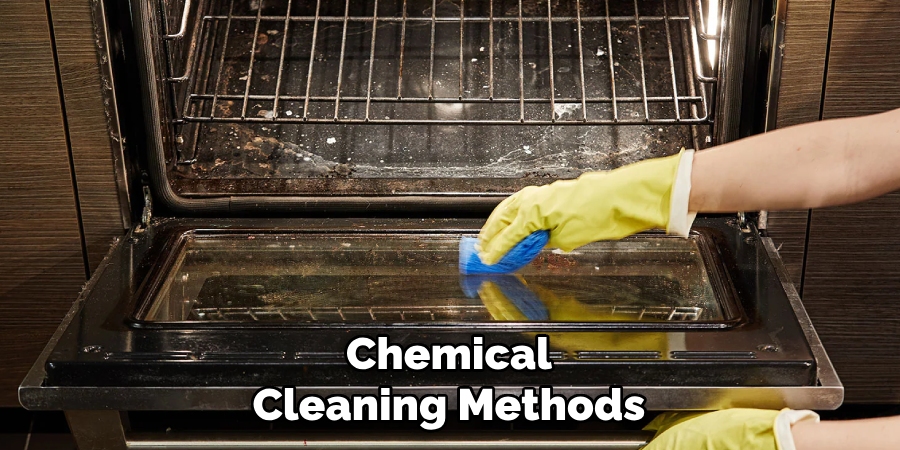
Conclusion
Learning how to clean oven without scrubbing can save both time and effort. Steam cleaning, self-cleaning cycles, baking soda paste, and no-scrub sprays all provide effective solutions for easily maintaining a spotless oven. Incorporating regular light cleanings into your routine prevents heavy grease buildup, making the need for deep scrubbing a thing of the past.
Choose the cleaning method that best fits your needs and lifestyle, and enjoy the benefits of a cleaner, fresher oven. By adopting these techniques, you’ll ensure your oven stays in top condition with minimal effort, leaving more time for what truly matters.
Professional Focus
Angela Ervin, a former interior designer turned blogger, specializes in kitchen design and renovations. Through her website, she blends her passion for cooking with design expertise, sharing practical and creative ideas. Known for balancing functionality and beauty, Angela’s insightful content has made her a trusted voice in home design and lifestyle.
About the Author
Angela Ervin, an experienced interior designer and blogger, combines her passion for kitchen renovations with storytelling. Living in Petersburg with her family, she enjoys cooking and testing her projects firsthand. Known for her humor and relatable style, Angela shares creative, functional design insights through her content, making her a trusted voice in home design.
Education History
University: Virginia Commonwealth University
Degree: Bachelor of Fine Arts (BFA) in Interior Design
- Angela’s education at VCU focused on mastering core interior design principles, including spatial planning, color theory, materials selection, and sustainable design practices.
- She gained hands-on experience through studio projects and collaborative design exercises, which honed her ability to create functional and aesthetically pleasing environments.
- Her coursework also emphasized problem-solving and practical applications of design, preparing her for real-world projects like her self-directed kitchen renovations.
- The program’s strong foundation in both technical skills and creative expression shaped Angela’s ability to seamlessly integrate form and function in her work.
